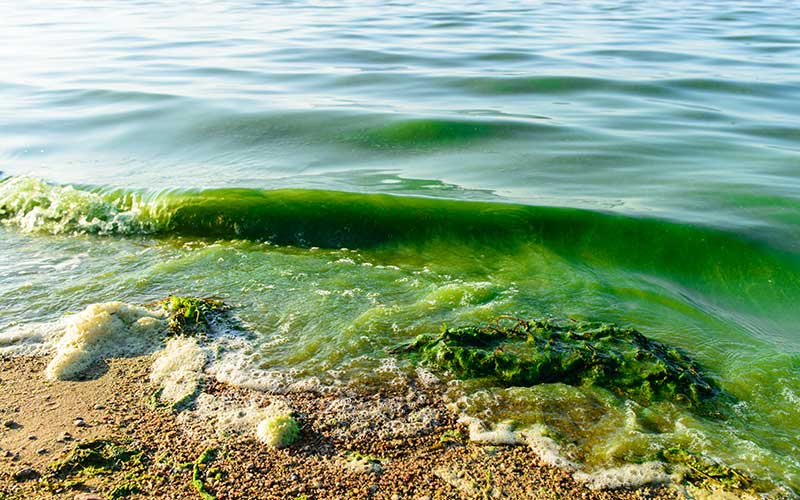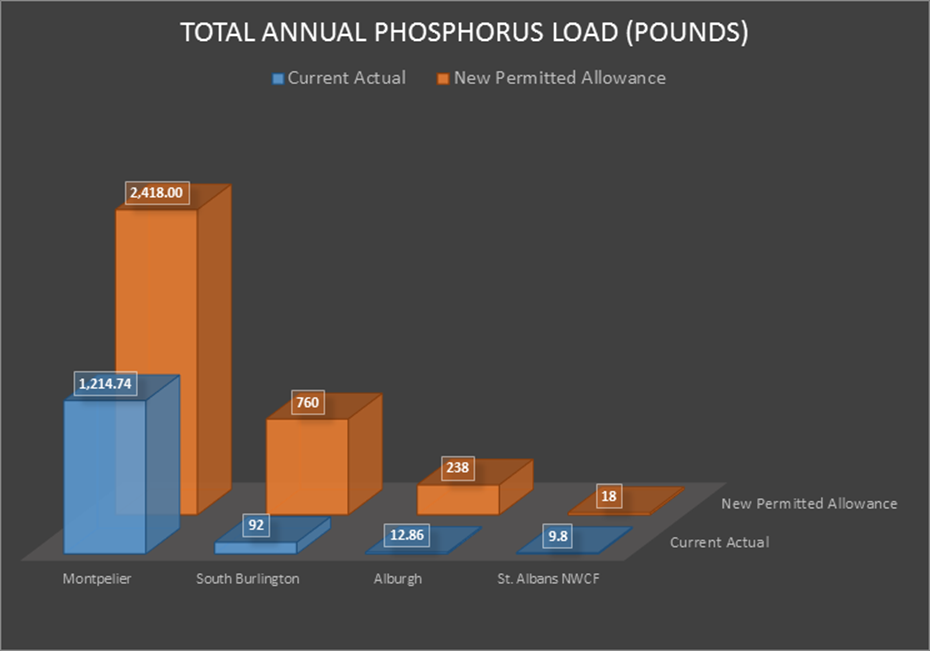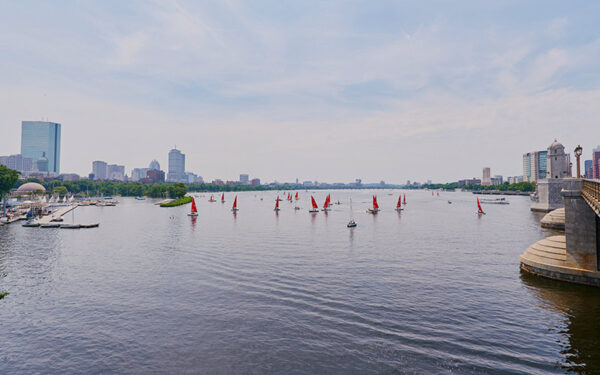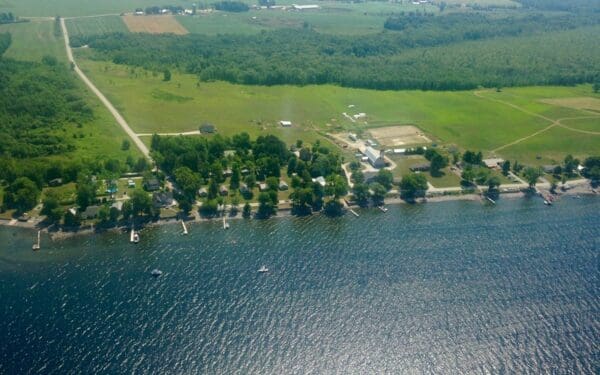
Vermont wants to let towns dump more pollution into Lake Champlain – a move that's illogical, irresponsible, and illegal. Photo: ©smspsy via Shutterstock
This past summer and fall, Vermonters saw firsthand the disastrous impacts of too much phosphorus pouring into Lake Champlain. Favorite swimming beaches closed and toxic blue-green algae coated portions of the lake in a stinky slime.
The State of Vermont has a plan to reduce phosphorus pollution into our iconic lake. But in a head-scratching first step in implementing that plan, the Agency of Natural Resources has issued permits to towns that allow for dramatic increases in phosphorus flowing into the lake.
Lake Champlain is in crisis, and adding more phosphorus takes us in the wrong direction. What’s more, it’s illegal. That’s why CLF is challenging these permits in state environmental court.
Where is all this phosphorus coming from and what’s the big deal?
Phosphorus occurs naturally in our environment. But too much of it in freshwater can stimulate the growth of blue-green algae. These foul-smelling blooms cloud the water, skew the biological harmony of the ecosystem, and produce harmful neurotoxins that can make people and pets sick. Some dogs have even died after ingesting algae-infested water (not to mention fish, aquatic plants, and other water wildlife that can’t survive in the oxygen-deprived water).
The phosphorus flowing into Lake Champlain comes from a variety of sources, including runoff from farm fields and barnyards and soil erosion from stream channels and forests. Other significant sources include stormwater runoff from water-tight surfaces (i.e., rainwater flowing off of roads, parking lots, and rooftops) and wastewater from sewage treatment plants.
Sewage treatment plants are vital to keeping our waterways clean. Unless a home relies on an on-site septic system, wastewater from our houses is pumped through pipes to the local sewage plant. There it is treated to remove pollutants, like bacteria, metals, and other elements, before it is pumped out into the lake.
Treated wastewater from sewage treatment plants contains the most potent form of phosphorus because it is already dissolved in water, as opposed to being bound to soil particles as it would be if flowing off of a muddy farm field. In fact, research shows that wastewater flowing from sewage treatment plants into the lake contains almost three times as much “bio-available” phosphorus (meaning it is much more readily accessible for algae to consume) than runoff coming from farm fields or roadways. As a result, it is particularly important for Vermont to deploy the best available technology to control phosphorus from these sources.
Vermont issues illegal permits to sewage treatment plants
The State of Vermont is under a federal legal obligation to reduce the amount of phosphorus flowing into Lake Champlain by 34 percent. Vermont proposes to reach this limit through a series of new, more-stringent regulatory programs that will mandate a decline of phosphorus pollution over the next 20 years.
But despite this federal requirement, the Agency of Natural Resources recently issued discharge permits to four sewage treatment facilities in the Lake Champlain watershed that allow for dramatic increases in the phosphorus pouring into the lake (see chart below). For instance, the discharge permit for the sewage treatment plant in Montpelier – the state capital – allows the facility to double the amount of phosphorus it is currently discharging!
Not only are these permits in violation of the federal Clean Water Act, but they also defy any logical and responsible approach to managing a lake already overloaded with this nutrient. Given the potency of these wastewater discharges, in particular, the state’s action here is like pouring gasoline onto the fire.
Challenging unlawful permits in state environmental court
Lake Champlain is at a critical juncture, and if these permits are allowed to stand, the frequent blue-green algae outbreaks and beach closures we’ve seen this fall will be just a precursor of things to come.
Luckily, CLF will never give up on protecting our beloved Lake Champlain. Defending the rule of law is our core mission. So we have appealed each of these permits to the state environmental court. Our argument to the court will be that the Agency of Natural Resources cannot lawfully issue permits that allow for any near-term increase in phosphorus pollution to the lake—at least not unless we see reductions in phosphorus from other sources.
The good news is that modern technology is available to remove more phosphorus from wastewater than Vermont towns are currently generating. This newer technology does have a cost, but the state cannot subsidize the future growth of our cities and towns by allowing Lake Champlain to become further polluted. By challenging these permits, CLF is holding the Agency of Natural Resources accountable to do its job of protecting the environment. It’s time to implement controls that provide for real reductions in phosphorus pollution. Allowing for any more phosphorus to be released into Lake Champlain is indefensible, irresponsible, and illegal.




